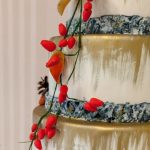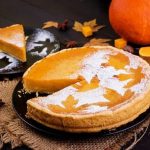Are you looking to take your cake decorating skills to the next level? In this article, we will explore the essential steps for preparing a cake for decorating. From selecting the right cake base to applying fondant or icing, we will guide you through the process of creating a perfect canvas for your creative designs. Whether you’re a beginner or a seasoned baker, mastering the art of preparing a cake for decorating is crucial for achieving professional-looking results.
When it comes to cake decorating, the preparation stage is key to ensuring that your finished creation looks as good as it tastes. By following our expert tips and techniques, you’ll be able to set the stage for a stunningly decorated cake that will impress and delight your family and friends.
In the following sections, we will cover everything from selecting the right cake base and leveling it for smooth decorating, to applying fondant or icing and adding final touches for a show-stopping presentation. So, let’s get started on our journey towards creating beautifully decorated cakes that are sure to wow any crowd.
Selecting the Right Cake Base
When it comes to decorating a cake, the foundation is crucial. Selecting the right cake base can make all the difference in achieving a beautifully decorated masterpiece. The type of cake you choose will affect the texture, taste, and overall appearance of your creation. Here are some tips for selecting the perfect cake base for decorating:
- Consider the type of decoration: If you plan to use intricate designs and decorations, a dense and sturdy cake like pound cake or sponge cake may be ideal.
- Size and shape matter: The size and shape of your cake should complement the design you have in mind. Round cakes are versatile and work well for many designs, while square or rectangular cakes provide a modern look.
- Flavor pairing: Consider the flavor of your cake in relation to the filling and frosting you plan to use. For example, a vanilla chiffon cake pairs well with citrus fillings, while a rich chocolate cake can handle bold flavors like coffee or caramel.
Taking these factors into consideration will help ensure that you have a solid foundation for your decorating efforts. Once you have selected the right cake base, you can move on to preparing it for decorating. Leveling and layering the cake is an essential step to ensure that it is ready for smooth and flawless decoration.
Remember that the choice of your cake base will set the stage for how your final product turns out. With careful selection and preparation, you can create a stunning canvas for your decorative vision to come to life.
Leveling and Layering the Cake
To begin with, leveling the cake is essential for achieving a smooth surface for decorating. After baking your cake and allowing it to cool completely, you will need to carefully trim off any domed or uneven areas using a serrated knife. It’s important to take your time and work slowly to ensure that the cake is level without removing too much. This will result in an even canvas for decorating and prevent any lopsidedness in the final presentation.
Once your cake is leveled, it’s time to layer it with delicious fillings such as buttercream, fruit compote, or ganache. Before adding the filling, create a dam of frosting around the edge of each layer to prevent it from oozing out when stacked.
Spread your chosen filling evenly over each layer, making sure not to add too much or too little. The key is to maintain an equal distribution of filling throughout the entire cake for a balanced taste with every bite.
By following these steps for leveling and layering a cake, you will be on your way to creating a perfect base for decorating. A smooth and even surface combined with delicious filling will set the stage for stunning decorations that will impress anyone who sees – and tastes – your finished masterpiece.
Crumb Coating the Cake
Before you start decorating your cake, it’s crucial to master the art of crumb coating. Crumb coating not only helps create a smooth foundation for your decorations, but it also seals in any loose crumbs, ensuring a clean and polished final look. Here’s a step-by-step guide on how to crumb coat a cake for a professional finish:
- Start by placing your cooled and leveled cake on a cake board or serving platter.
- Using an offset spatula, spread a thin layer of frosting over the entire surface of the cake. This initial layer will trap any loose crumbs, preventing them from showing through in the final coat.
- Place the crumb-coated cake in the refrigerator for about 15-20 minutes to allow the frosting to set.
- Once the first layer has set, apply a second, thicker layer of frosting over the entire cake, covering up any visible crumbs from the first layer. Smooth out the frosting as evenly as possible.
The purpose of crumb coating is not only to create a flawless canvas for your decorations but also to provide stability and structure to your cake. Once you’ve successfully crumb coated your cake, you’re one step closer to achieving that professional bakery-like finish.
With these tips on how to prepare a cake for decorating by mastering crumb coating, you can ensure that your final masterpiece looks as good as it tastes. Next up is creating an impeccably smooth surface on your cake before moving on to applying fondant or icing.
Creating a Smooth Surface
When preparing a cake for decorating, achieving a smooth surface is essential for a professional and polished finished product. A smooth surface provides the perfect canvas for intricate piping work and decorative elements to stand out. Here are some techniques and recommendations for creating a smooth surface on your cake.
Techniques for Smoothing
After crumb coating the cake, there are several methods for achieving a smooth surface. One popular technique is using a bench scraper or offset spatula to gently smooth the icing or fondant around the cake. Start at the top of the cake and work your way down the sides, ensuring an even layer of icing or fondant. Another method involves using parchment paper to gently press and smooth the surface of the icing or fondant.
Recommended Tools and Methods
For achieving a perfectly smooth surface, investing in high-quality tools can make all the difference. A turntable is highly recommended for evenly spreading icing or fondant around the cake while allowing for easy access from all angles. Additionally, an icing smoother tool can help achieve a flawlessly smooth exterior on the cake. When working with fondant, a rolling pin specifically designed for fondant can help ensure an even thickness and smoother application.
Tips for Success
To ensure success in creating a smooth surface on your cake, it’s important to work with room-temperature icing or fondant. Cold ingredients can cause cracking, while warm ingredients may become too soft and difficult to work with. Additionally, taking your time and being patient during this step is crucial. Rushing through the process can result in uneven surfaces and air bubbles in the frosting or fondant.
By following these techniques, recommendations, and tips, you can create a flawlessly smooth surface on your cake that will serve as the perfect base for showcasing your decorating skills.
Applying Fondant or Icing
When it comes to decorating a cake, one of the most crucial steps is applying fondant or icing. This is where your creativity can really shine, and it’s important to make sure you have a smooth base to work with. Here are some tips on how to prepare a cake for decorating with fondant or icing:
First, ensure that your cake is leveled and layered properly. A flat and even surface will make it much easier to apply the fondant or icing evenly without any bumps or lumps. Use a long, serrated knife to carefully trim off any uneven areas and ensure that each layer is even in thickness.
Next, you’ll want to crumb coat the cake before applying the fondant or icing. This involves covering the entire cake with a thin layer of frosting to seal in any crumbs and create a smooth base for the final layer of fondant or icing. The crumb coat will also help the fondant or icing adhere better to the cake.
Once you have crumb coated the cake, chill it in the refrigerator for about 30 minutes to allow the frosting to set. This will make it easier to handle when you apply the final layer of fondant or icing. When you’re ready, gently roll out your fondant or prepare your icing and carefully drape it over the chilled cake, smoothing it out as you go.
By following these steps, you can ensure that your cake is well-prepared for decorating with fondant or icing. Taking the time to properly prepare your cake will not only result in a more visually appealing finished product but will also make the decorating process much smoother.
| Steps | Details |
|---|---|
| Leveling and Layering | Ensure an even surface for easier application of fondant/icing |
| Crumb Coating | Seal in crumbs and create a smooth base for final layer |
| Chilling | Refrigerate after crumb coating for easier handling during final application |
Preparing for Piping and Decorating
Leveling and Smoothing
Before you can begin piping and decorating your cake, it’s crucial to ensure that the surface is level and smooth. Use a long, serrated knife or a cake leveler to carefully trim off any domed top to create a flat surface. Then, use a bench scraper or offset spatula to gently press against the sides of the cake to create smooth edges and an even surface.
Chilling the Cake
Once your cake is leveled and smoothed, it’s helpful to chill it in the refrigerator for about 30 minutes. This will allow the buttercream or icing to set, making it easier to apply piping details and decorations without smudging or melting.
Piping Preparation
Prepare your piping bags with the desired tips and fill them with icing or buttercream. It’s important to have a clear idea of your design before beginning to pipe, as this will help you determine which tips are needed for different elements. Additionally, practicing your piping technique on a piece of parchment paper before working on the cake can help improve accuracy and confidence when decorating.
By following these steps for preparing your cake for piping and decorating, you’ll be able to achieve a flawless finish that serves as an ideal canvas for showcasing your creativity with various designs and decorations.
Final Touches and Presentation
Creating a beautifully decorated cake doesn’t end with the actual decoration process. Final touches and presentation play a crucial role in showcasing the work put into decorating the cake. Whether you’re preparing a cake for a special occasion or as a professional baker, attention to detail in this final stage can make all the difference.
One way to add final touches to a decorated cake is by adding embellishments such as fresh flowers, edible pearls, or decorative piping details. These extra elements can elevate the overall look of the cake and tie together the theme or design. It’s important to consider the style and color scheme of the cake when choosing these final touches to ensure they complement rather than overwhelm the design.
In terms of presentation, how you display and present the decorated cake can significantly impact its visual appeal. Consider using a beautiful cake stand or platter that complements the design of the cake. Pay attention to details such as adding a ribbon around the base of the cake stand or incorporating themed décor elements around the displayed cake to enhance its presentation.
It’s also essential to ensure that any supporting elements such as flowers or figurines are securely attached to the cake before presenting it. This will prevent any mishaps during transportation or display and give your finished creation a polished and professional appearance.
| Final Touches | Presentation |
|---|---|
| Embellishments like fresh flowers, edible pearls, or decorative piping details | Use beautiful cake stand or platter that complements design of the cake |
| Securely attach supporting elements like flowers or figurines before presenting | Add ribbon around base of cake stand or incorporate themed décor elements |
Conclusion
In conclusion, preparing a cake for decorating is an essential step in creating a beautiful and professional-looking finished product. From selecting the right cake base to applying the final touches, every step plays a crucial role in the success of the decorating process. By following the tips and techniques outlined in this article, you can ensure that your cake is perfectly prepared for decorating, setting the stage for stunning results.
One of the most important aspects of preparing a cake for decorating is achieving a smooth surface, whether you’re using fondant or icing. This provides a flawless canvas for your creative designs and ensures that your decorations will look their best. Additionally, leveling and layering the cake properly, as well as crumb coating it, are key steps in creating a professional finish that will make your decorated cake stand out.
We hope that this article has provided you with valuable insights into how to prepare a cake for decorating. By following these guidelines and putting them into practice, you can elevate your cake decorating skills and create show-stopping confections that will impress friends, family, and clients alike. With careful preparation and attention to detail, you can take your decorating projects to the next level and achieve outstanding results.
Frequently Asked Questions
How Do You Prepare a Cake Before Decorating?
Before decorating a cake, it’s important to ensure that the cake is completely cooled. It’s also helpful to level the top of the cake if it has a rounded dome, as this helps the frosting go on more smoothly. Additionally, brushing away any loose crumbs from the cake’s surface will provide a clean canvas for decorating.
How Do You Frost a Cake for Beginners?
For beginners, frosting a cake can seem daunting, but it’s actually quite simple with the right technique. Start by placing a small amount of frosting on the center of the cake stand or plate to act as an anchor for the cake.
Then, spread a generous amount of frosting on top of the first layer before adding the second layer and repeating the process. Once all layers are in place, frost the sides and top evenly, using a bench scraper or offset spatula for smoothness.
How Do You Store a Cake Overnight Before Decorating?
When storing a cake overnight before decorating, it’s important to keep it fresh and moist. One method is to wrap the cooled cakes tightly in plastic wrap and store them at room temperature.
Alternatively, you can refrigerate the cakes if they have perishable fillings or frostings. Regardless of method, proper storage ensures that your cakes will be ready for decoration when you are.

Welcome to my blog about home and family. This blog is a place where I will share my thoughts, ideas, and experiences related to these important topics. I am a stay-at-home mom with two young children. I hope you enjoy reading it! and may find some helpful tips and ideas that will make your home and family life even better!





